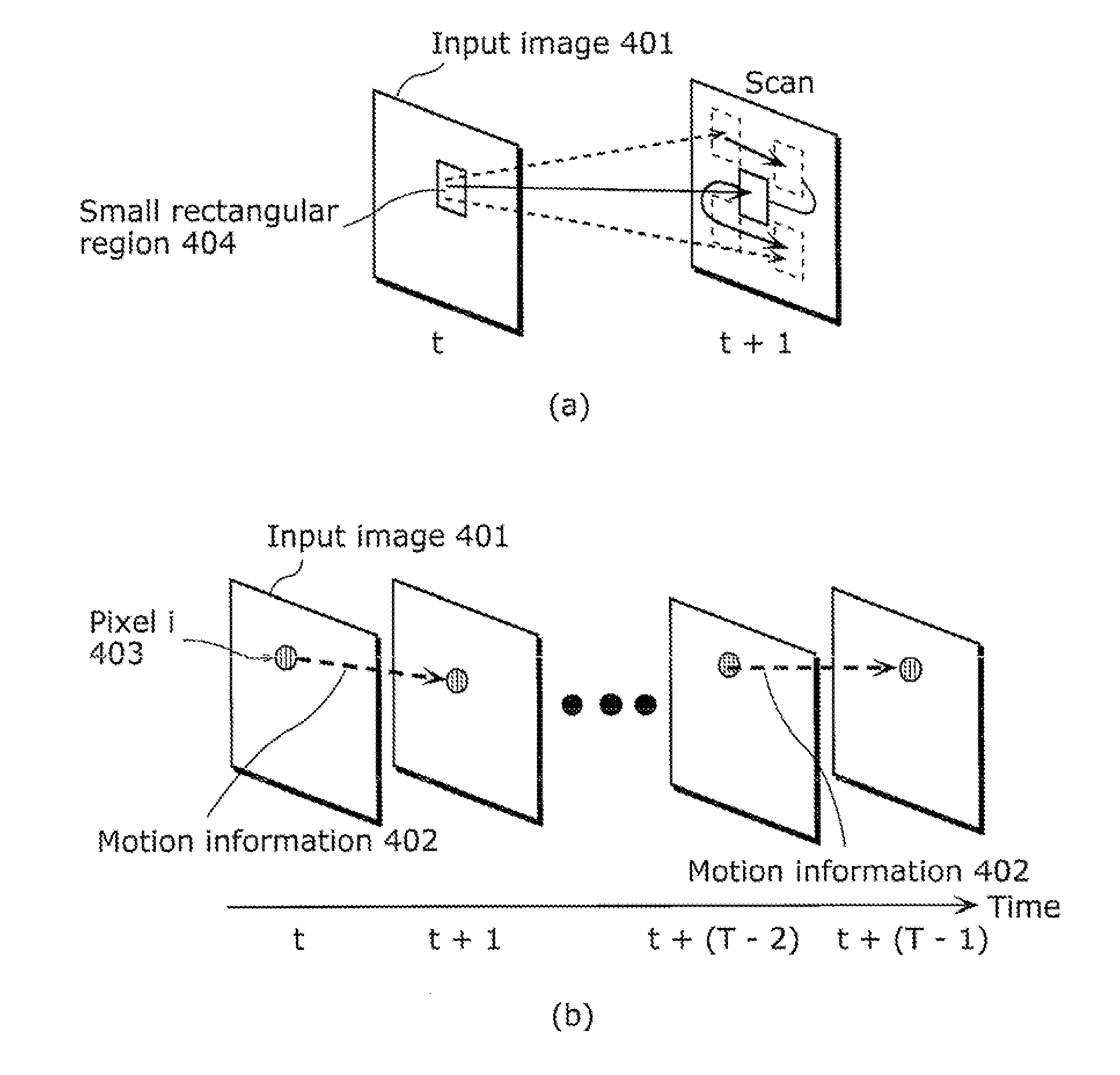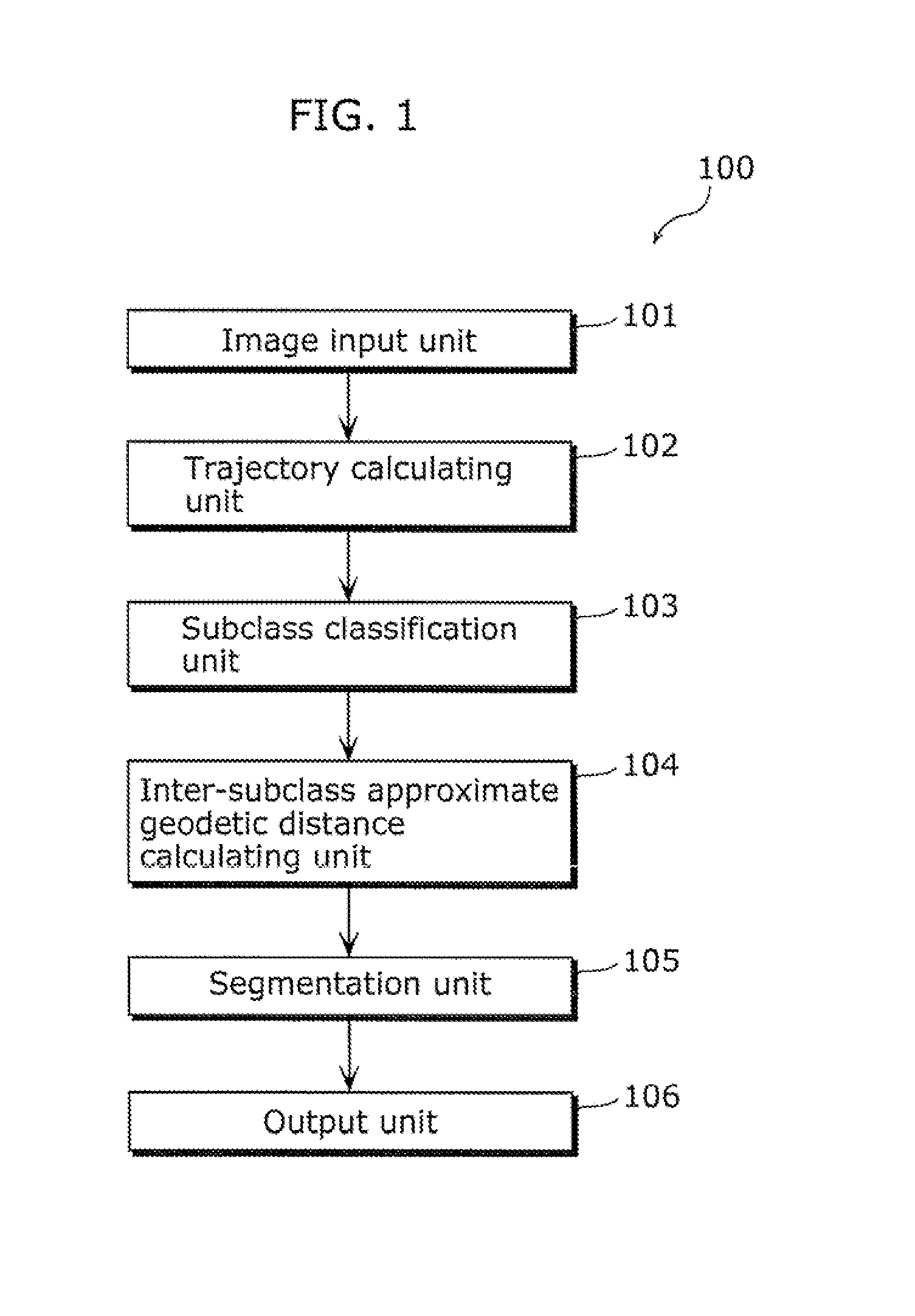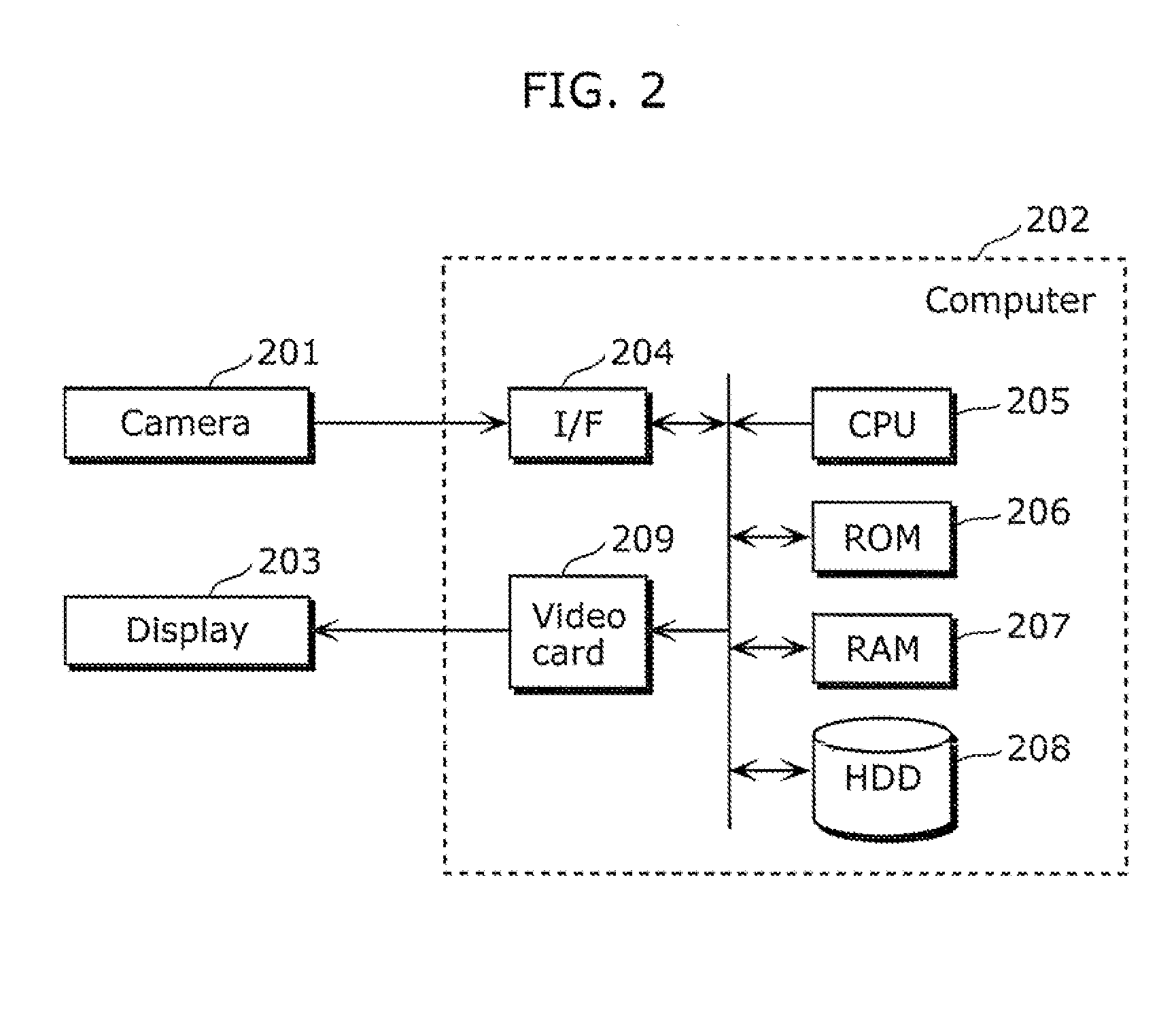Moving object detection apparatus and moving object detection method
- Summary
- Abstract
- Description
- Claims
- Application Information
AI Technical Summary
Benefits of technology
Problems solved by technology
Method used
Image
Examples
first embodiment
[0085]The following will describe a first embodiment of the present invention with reference to the drawings.
[0086]FIG. 1 is a diagram showing a configuration of a moving object detection apparatus 100 according to an embodiment of the present invention. As shown in FIG. 1, the moving object detection apparatus 100 includes: an image input unit 101, a trajectory calculating unit 102, a subclass classification unit 103, an inter-subclass approximate geodetic distance calculating unit 104, a segmentation unit 105, and an output unit 106. The moving object detection apparatus 100 is an apparatus which detects a moving object in video by performing segmentation to specify all or part of regions of the moving object in the video. In other words, the moving object detection apparatus 100 detects the moving object in the video by performing classification (clustering) to specify all or part of the regions of the moving object in the video, using trajectories made up of corresponding points...
second embodiment
[0193]Next, a moving object detection apparatus according to a second embodiment of the present invention will be described.
[0194]Here, an example is described in which the subclass classification processing is performed by the subclass classification unit 103 in a different manner from the manner described in the first embodiment. FIG. 10 is a diagram showing a configuration of a moving object detection apparatus 100a according to the second embodiment of the present invention.
[0195]The moving object detection apparatus 100a according to the second embodiment includes: an image input unit 101, a trajectory calculating unit 102, a subclass classification unit 103a, an inter-subclass approximate geodetic distance calculating unit 104, a segmentation unit 105, and an output unit 106.
[0196]Such a moving object detection apparatus 100a according to the second embodiment has the same configuration as the moving object detection apparatus 100 according the first embodiment, except for the...
third embodiment
[0210]Next, a moving object detection apparatus according to a third embodiment of the present invention will be described.
[0211]In the third embodiment, in addition to the first and second embodiments, whether or not to synthesize subclasses is determined based on temporal variation in the inter-subclass approximate geodetic distance.
[0212]Since the moving object detection apparatus 100 according to the third embodiment has the same configuration as the moving object detection apparatus 100 according to the first embodiment as shown in FIG. 1, the description of each constituent element will be omitted. However, the processing performed by the segmentation unit 105 is different from the processing in the first embodiment. The following will describe the third embodiment centering on the differences from the first embodiment.
[0213]Hereinafter, an operation of the moving object detection apparatus 100 according to the third embodiment of the present invention will be described with r...
PUM
 Login to View More
Login to View More Abstract
Description
Claims
Application Information
 Login to View More
Login to View More - R&D
- Intellectual Property
- Life Sciences
- Materials
- Tech Scout
- Unparalleled Data Quality
- Higher Quality Content
- 60% Fewer Hallucinations
Browse by: Latest US Patents, China's latest patents, Technical Efficacy Thesaurus, Application Domain, Technology Topic, Popular Technical Reports.
© 2025 PatSnap. All rights reserved.Legal|Privacy policy|Modern Slavery Act Transparency Statement|Sitemap|About US| Contact US: help@patsnap.com



